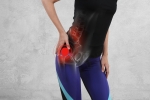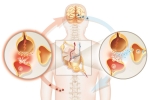Home »
Blog » Pain Management
| Stem Cell, PRP, Acupuncture in Queens & Long Island, New York
Pain Management | Stem Cell, PRP, Acupuncture in Queens & Long Island, New York
Physical therapy (PT) can help manage movement and reduce pain in people with neurological diseases, those who have had traumatic injuries, and other conditions. Trained professionals evaluate and take measures to enhance a person’s physical function. According to the American Physical Therapy Association (APTA), physical therapists are trained and licensed movement experts. They can diagnose and treat a range of injuries, disabilities, and health conditions.
Read more
Becoming a physical therapist is no easy journey. Any hopeful must earn a bachelor’s degree in a related field, then complete a three-year (on average) doctorate program to receive their doctorate of physical therapy (DPT). To earn a license to practice in their state, they must also pass the National Physical Therapy Exam (NPTE) and any additional state licensing guidelines.
Read more
Headaches And Orofacial Pain - Chronic headaches can vary in severity and can be very debilitating to live with. Orofacial pain refers to pain that is felt in the face, mouth, or jaw area. Migraine - There are a few types of migraines that can vary in severity. Migraines are common and, for some people, can be experienced frequently throughout the day or week.
Read more
The cause of your hip pain may be the result of a variety of problems that begin in your hip joint, your spine, or your groin. Expert physicians help patients determine the underlying cause of hip pain to create the most effective treatment plan for them. What Causes Hip Pain? While the pain in your hip may be commonly occurring, the potential causes are varied, so there’s no one-size-fits-all way to treat it. You may feel pain in one or both hips if you have a problem with your joints, spine, or buttocks. Hip pain may also be the result of problems with your muscles, tendons, or ligaments.
Read more
Complex regional pain syndrome not only has complex pain pathways but can also be challenging to treat. New NIH grant research on stem cells could provide more care options, but will payers cover regenerative medicine? The National Institutes of Health (NIH) recently awarded researchers at the Cleveland Clinic a $5.5 million grant to develop a stem cell treatment for complex regional pain syndrome (CRPS). This is the first federally funded research to date on mesenchymal stem cells for pain and the largest grant to support studies on CRPS.
Read more
Find out how a variety of chronic pain conditions feel from a first-person perspective, along with coping tips and messages of hope! The experience of living with chronic pain can be extremely difficult. There is a wide range of chronic pain diagnoses, which have their own set of symptoms and accompanying challenges. We’re all individuals, so even within one type of chronic pain, each person will have different experiences and differ in the way the pain affects their day-to-day lives.
Read more
If you’ve been suffering from chronic back or neck pain that doesn’t respond well to other pain-relieving methods, spinal cord stimulation may be the solution. The board-certified physicians help patients get adequate relief from pain with the use of spinal cord stimulation. What is Spinal Cord Stimulation? Spinal cord stimulation is a treatment where electrical impulses stimulate the nerves in your spinal cord. This process interferes with the pain signal path to your brain.
Read more
Low back pain is simultaneously one of the most common and vexing pain conditions physicians treat. According to the International Association for the Study of Pain (IASP), low back pain (LBP) is the leading cause of years lived with disability and is a major public health concern worldwide. Physicians who change how they frame the condition, specifically, not as an injury, may reduce healthcare expenditures as well as improve patient outcomes, based on a recent study.
Read more
How To Get Started - You might be thinking that this all makes sense, but be lost as to where to get started! It can feel a bit overwhelming, but don’t worry you don’t have to do this alone. Let’s go over how you can get started on your journey. Educate yourself about pain science - You’re already getting involved in the first step! It’s important to educate yourself about the science behind pain to understand how retraining your brain works. When you first hear about the concept, it can sound a bit ‘out there’ or ‘too good to be true’, but once you understand the science, it all makes so much sense!
Read more
The causes of joint pain are as numerous as the joints in your body, so it’s imperative to figure out what’s responsible for your joint pain to best relieve the symptoms. What Causes Joint Pain? Injury, illness, and disease may all be underlying causes of your joint pain. Sometimes, a problem with your tendons, ligaments, or bursae that surround the joint can also be contributing factor. Arthritis, an inflammatory, degenerative condition, is another common reason your joints may be aching.
Read more
Love this Post? Spread the World
























